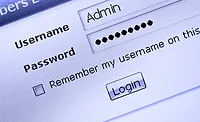Managing Access to Restrict Cellphone Use
The restricted access of cellular devices in secured areas is a top priority for national security in the United States and around the world. Recent events ranging from illegal activities coordinated from within correctional institutions to sensitive information being leaked from secured facilities has emphasized the need to implement precision control of wireless communications over secured areas. There are now more cellular devices in the United States than there are people. As our society becomes more and more connected it is essential that security officials adopt solutions that keep pace with both innovation and the ubiquitous nature of personal devices – while striking a balance between the need to communicate and the need for security.
For instance, one of the most significant security challenges today is the introduction of contraband cellular devices inside of correctional institutions. In 2013, the Baltimore City Detention Center (BCDC) faced such a challenge. Tavon White, Leader of the Black Guerilla Family gang, ran a sophisticated scheme to move contraband into BCDC eliciting the assistance of fellow inmates and correctional officers. The Maryland Department of Public Safety and Correctional Service’s response included deploying a Managed Access system to turn the contraband cellular devices into paperweights. Today the institution is a national model for departments across the country searching for a solution to combat contraband cellphones within their facilities.
Similarly, in North Carolina, an Assistant District Attorney’s family was recently put in grave danger when an inmate she had put in prison used a contraband cellphone to orchestrate her attempted kidnapping. The inmate’s accomplices instead abducted and tortured the attorney’s father, updating the inmate via text messages throughout the entire process. Incidents, such as the cases in Maryland and North Carolina are becoming more frequent across the nation. For this reason, prison officials and state legislatures are moving rapidly to adopt managed access solutions, customized to their needs.
The same technology that allows correctional institutions to win the fight against contraband cellphones also makes it possible for smarter secure use of mobile devices in other highly secured areas, such as military bases and embassies. By operating as a separate cellular network around a precisely defined target area, the command element has the ability to completely control and monitor all communications. The managed access solution is a sure way to allow authorized cellular use while simultaneously denying unauthorized cellular use in any facility without the need to collect devices upon entry. In addition, this solution can be used in a way which would allow employees to bring their own device, yet ensuring sensitive information is kept secure.
This cutting edge wireless technology that enables managed access is also a driving force behind new innovations for assisting our government’s response during critical events. The technology, which creates a rapidly deployable secure cellular network within a defined area, can provide an ideal platform during an emergency response. One of the most common threads from 9/11 to the Boston Marathon bombing is the recurring reality that commercial cellular networks are often unavailable during major critical events. As a result, a common challenge confronting responders from the local, state and federal levels is their inability to communicate in real-time securely and effectively as a group during a major emergency.
While networks such as FirstNet are ultimately designed to address these issues, the reality is that it will likely be some time before the FirstNet public safety infrastructure is online throughout the U.S. By deploying managed access, first responders have the ability to navigate each unforeseen circumstance with the communication equipment needed. Since the managed access capability set and technology are positioned correctly for adoption into the forthcoming public safety infrastructure, government entities have the opportunity to make an immediate impact today on our country’s well-being.
Today, the role of communications is just as essential to our security professionals and responders as it is to all of us in our daily lives. As officials work to balance the need to communicate with the need for security, they should continue to embrace sophisticated managed access solutions which can provide both.
Looking for a reprint of this article?
From high-res PDFs to custom plaques, order your copy today!






